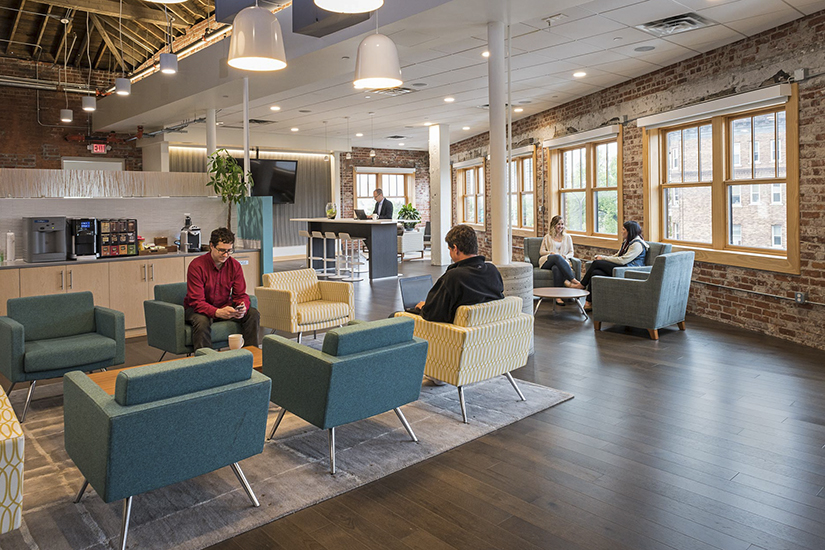|
Getting your Trinity Audio player ready...
|
On January 1, 2020, Todd Archbold stepped into the CEO position for Minnesota-based PrairieCare. The CEO has been with the organization for nearly fifteen years, and his elevation to the highest position in the executive suite is inspirational for a litany of reasons. A youth sports coach, school counselor, school social worker, and eventual healthcare social worker, Archbold’s uncommon path is the result of a motivated individual continually seeking to find new ways of positively impacting people’s lives.
Archbold’s promotion to CEO would be the obvious moment to stop and celebrate, looking back on a career that is already flush with so many unique twists and turns. Archbold may have been able to take that brief pause were it almost any other year than 2020. “Those first ten weeks, things were fantastic,” Archbold says, laughing. But the COVID-19 pandemic would provide Archbold, PrairieCare, and the entire healthcare industry at large one of the most challenging periods in American history.
Communication & Capacity
PrairieCare is in an especially unique position due to its full continuum of psychiatric services, the organization’s well-earned reputation for high-quality mental health care, and one of the largest psychiatric medical groups in the region (of the 750 staff, over 200 are licensed clinicians and 45 are psychiatrists).“Even with that [mental health] staff, we still can’t meet all of the demand here in Minnesota,” Archbold explains. “There’s simply a demand for these services that still outstrips all of our growth.”

The growth the CEO speaks of is formidable by any standard. “We had a 30 percent growth rate every year for ten years with patient encounters,” he says. “One of my first initiatives as CEO was to build a culture focusing on communication, accountability, and planning. With that kind of explosive growth, I think we needed to backtrack a bit and figure out appropriate channels to ensure accountability and maintain high standards.”
The strategy plan that the executive suite began working on in January (and deployed in July) 2020, has wound up being a vital reconfiguration during one of the most stressful periods in healthcare. “The new strategy plan converging with the pandemic was probably the best thing we had going for us,” Archbold explains. “Our plan is based on refinement and excellence and has allowed us to create alignment throughout the organization. The focus on communication has helped ensure our people are aligned in the planning process and with our strategy. It became our north star.”
PrairieCare’s EHR/RCM partner is impressed with Archbold’s visionary leadership. “Todd has a solid grasp of how technology can be scaled to benefit both patient care and operational performance,” says Yuval Lirov, ClinicMind president and CEO. “Todd has empowered his people to deliver a superior patient experience and achieve fantastic growth.”
And while Archbold has been focused on finding ways to increase efficiencies, it must be said that PrairieCare is an organization used to performing at incredibly high standards. “Throughout the pandemic, there have been extraordinary concerns over surges threatening hospital thresholds, many running at very high occupancy rates,” the CEO says. “That’s something I’ve been experiencing my entire career in acute care psychiatry. We are essentially experts at running at max capacity. The difference between operating sixty-five and seventy beds in our hospital can quickly amount to an extra two hundred people receiving critical care each year. We take that very seriously.”
Award-Winning Mental Health Initiatives
It’s not just the volume but the quality of care that has set PrairieCare apart. Its mental health organization just recently received two national awards from both the American Psychiatric Association as well as the Association of Medicine and Psychiatry for its outstanding innovation in patient care.
The Psychiatric Assistance Line (PAL) allows any healthcare provider in Minnesota to be immediately connected to a clinical social worker to help with assessment or referral, or one of its psychiatrists to help pediatricians better understand the differences between anxiety and ADHD, or an OB/GYN looking for more information on helping a patient deal with postpartum depression.
“It’s not interacting with a healthbot or leaving a message that you hope to have returned at a convenient time,” Archbold explains. “It’s instantaneous so they can get the help while they’re sitting in their office with the patient.” In a time when PrairieCare has seemingly taken a pause from massive expansion to get its house better in order, it’s still finding ways to earn national recognition for innovation.

But on this issue, the CEO is as humble as one might expect a former guidance counselor to be. “I don’t think of it as innovation, that’s the kind of word I think of when I think of a company like Tesla,” Archbold says. “This relates back to that refinement and excellence. I think we had the gumption to think that this was a very simple thing we could do that could make a profound difference. Maybe some of the most innovative things can be the simplest.”
The same thinking has been applied to colocating PrairieCare’s mental health professionals in primary care settings, hospitals, and even schools. At a local pediatric clinic, there are three therapists and a psychiatrist on staff. “We believe that if primary care asks the right questions, the need for mental health services will become apparent, so we’ve parked our clinicians in those office settings,” Archbold says. “We know if a primary care provider makes a referral to see a psychiatrist, there’s a 50 percent chance the patient will follow through. So why not have that primary care physician walk the patient down the hall, in an environment the patient already recognizes? This is integrated care done right.”

